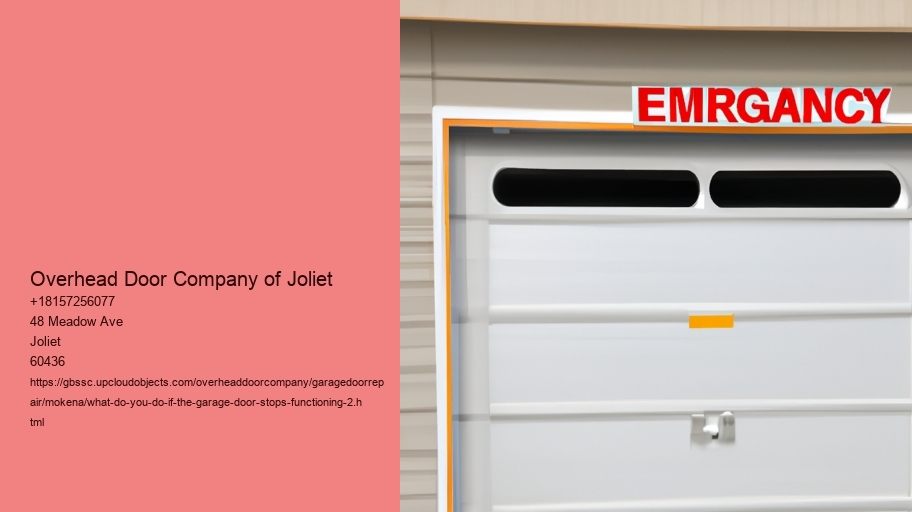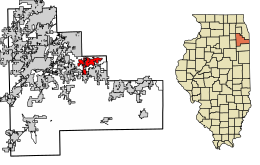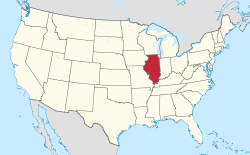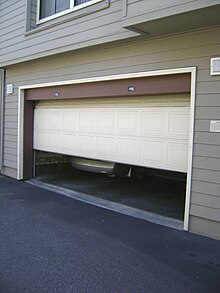Determine the Garage's Type Door and Opener
It is important to know the kind of garage door and opener that you are using before you start troubleshooting. What is the most important thing You Should Do When Your Garage Door Suddenly Stops Working? .
Garage doors are generally classified into different categories according to their design and operation.The most common types are sectional, roll-up as well as tilt-up doors.Sectional doors are made of panel sections connected with hinges that allow the door to bend when it is closed and opened on a vertical track.Roll-up doors, often found in commercial spaces made from sections of wood that are rolled up into a coil.
Tilt-up doors on the other hand they are a solid piece that can be tilted out and up as it opens.Belt-drive garage door openers have a lower noise but they use an elastic band instead of chain. They are a great option for garages with attached garages. Garage door openers with screw-drive make use of a rod made of steel for moving the garage door. This is the ideal option for noise and cost.
The next thing to do is to check the garage door opener to identify the model. Check the plug and breaker to make sure that the opener is powered. Examine the release cord for manual operation to make sure that it hasn't pulled. This would cause the door to be removed from the opener. Examine the rollers and tracks of the door for damage or obstructions. Remove any debris.
If necessary, lubricate the moving components. Insufficient lubrication could cause them to jam or even become stuck.If the door is still unable to work, you should consider resetting the opener.This can usually fix electronic issues or faults.Consult the manual of your opener for specific reset instructions as this process can vary between models.Many modern openers come with a reset button, whereas others may require unplugging them and plugging it back in.
In certain instances the problem may be more complicated, such as a broken spring or a damaged motor, which would require professional assistance.Springs are in a high tension, and they can be dangerous to repair without proper tools and skills.
In the end, if your garage door suddenly stops working then it is
Be sure to look for obstructions or debris.
When your garage door suddenly ceases functioning, it can be both perplexing and frustrating, especially if it's a part of your routine.
One of the basic and most useful steps to do when confronted with this situation is to examine the door for any obstructions or debris.This simple but effective step is often the most effective way in identifying the issue and returning functionality to your garage door.Garage doors operate by a set that includes rollers, tracks as well as other parts that need to be free of obstacles in order to function smoothly.Over time dirt, leaves tiny rocks, or any other debris can build up along the tracks, or get caught in the rollers.Even small obstacles can cause the door to stop closing or opening properly.Therefore it is imperative to conduct a thorough examination of these components is your first step.
Start by looking at the tracks, both on the left and right sides of the door. Look for obvious obstructions or buildup. If you spot something unusual, like something like a twig, or rock stuck in the track. Take it out with care.
There are times when the problem may not be apparent immediately So, it's recommended to run your hands across the track to look for any unnoticed obstacles.Ensure that the tracks are properly aligned and also, since in the event of a misalignment, it could cause the door to jam.The next step is to inspect the rollers as well as hinges.These parts should be able to move without resistance.If they're squeaky or stuck, it could be a sign of accumulated grime or rust.In such cases, cleaning and lubricating them is often a solution to the issue.Use a soft brush or cloth to remove any debris, then apply a suitable lubricant in order to ensure that they move freely.
Examine the area around the door. There are occasions when objects within the garage could slide or move, making it difficult for the door to move. Make sure there are no obstructions, and that there are any objects that could hinder the door.
If, after clearing any obvious obstructions, the door still refuses to work you should think about checking the sensors.
The sensors in modern garage doors can malfunction if they are dirty or not aligned properly. By maintaining a clean path and by avoiding obstructions, you'll save yourself the hassle of calling a professional to fix a problem that is usually easy to fix.
What do you do if the garage door stops functioning? - river
- ethnicity
- signal
- Ohio River
Check the remote control and Wall Switch
When the garage door stops functioning, it can be an unexpected inconvenience that disrupts your daily routine.In these situations, it's natural to feel an urgency to solve the problem quickly.One of the initial and most efficient actions you could take is to look at the remote control as well as the wall switch.
These components are typically the main reason behind a non-responsive garage door and checking them can save you time and possibly avoid unnecessary expenses.First, consider the remote control.This handheld device is your primary tool for operating the garage door without direct physical interaction.Over time, remote controls can experience issues such as drained batteries, signal interference, or even internal damage.Start by replacing the batteries with new ones.It might seem simple, but dead batteries are a common reason for a garage door not responding.If the problem persists after replacing the batteries, try reprogramming the remote according to the manufacturer's instructions.Additionally, ensure that the remote is within the recommended range and that there are no obstructions blocking the signal.
Then, pay attention to the wall switch, which is an additional important component of the garage door's system.
The wall switch is directly linked to the garage door opener and often provides a more reliable way for operation.Inspect the switch for any indications of physical damage or wear.Sometimes, loose wires or connections that aren't working properly can make the switch malfunction.If you feel confident doing this, remove the switch's panel and look for broken or disconnected wires.If any issues are found there is a need to contact an electrician professional to resolve the issue.In certain situations, the wall switch could appear to be working but the door still remains unresponsive.This could indicate a problem in the garage door opener unit itself or with other components like sensors or door tracks.However, starting with the remote control and wall switch would be a sensible first step.
You can eliminate these issues before you begin more difficult troubleshooting.To conclude, checking the wall switch and the remote control in the event that your garage door suddenly stops operating is a straightforward and efficient approach.By taking a look at these components first, you'll be able to determine whether the problem lies in these parts that are easily accessible or if additional investigation is needed.This initial inspection does not only cut down on time, but also gives you peace of mind knowing that you've taken the necessary steps to diagnose the problem correctly.
Verify the door's balance by hand
It's frustrating and inconvenient when the garage door ceases functioning. Garage doors are a vital part of your home as it offers security, protection against weather elements, as well as easy access to your car as well as storage.
Conducting a manual test of the balance of the garage door is a critical step to take in the event that your door is not functioning properly. This simple, yet effective technique will allow you to identify any potential problems and prevent any further damage.The balance of a garage's door is essential to the proper functioning.A properly balanced door makes sure that the opener doesn't have to perform more work than it has to, reducing the possibility of wear and tear on the motor as well as other parts.An overbalanced door however could lead to more significant problems over time, including misalignment, broken springs or a complete system failure.Therefore, testing the door balance is an important check that will help you determine whether the issue is in the door or the opener mechanism.
Begin by disconnecting the garage door opener.
Most garage doors come with a release device that is found on the red cord or the handle. After the door has been disconnected from the motor, raise it up to waist level and let it go. A properly balanced door will stay in place and move slowly.It is recommended that you contact an expert to assist you adjust the springs to ensure that your garage door is in a balanced state. This will not only fix the issue, but also increase the life span and longevity of your system.
In conclusion, manually checking the door's balance is a crucial first step to take when your garage door suddenly stops working.
What do you do if the garage door stops functioning? - river
- floor
- glass
- board of directors
Tracks and Rollers
This simple check will make it easier to save time and money If your garage door not working.
Tracks and rollers are critical elements of the garage door's operation system.The tracks comprise the iron rails that help guide the door's movement when it opens and closes. The rollers are tiny wheels that are able to move along these tracks.
These parts are prone to get dirty, wear out or misaligned as time passes. This can lead to issues with operation.Begin by looking over the track for any obstructions. Grime, dirt and even small particles could build up, making rollers struggle to travel on the track. Cleaning the tracks with a moist cloth could solve the problem.
After that, you should check the alignment of the tracks.Tracks should be perfectly straight and parallel to each other.If they appear bent or out of alignment, the door could jam.You can gently press the misaligned parts back into position using an rubber mallet.However in the event that the damage is extensive then it is recommended to contact a professional to re-align them properly to ensure safety and efficiency.
The rollers may wear out over time. This is especially true for those made of plastic.
Metal rollers with bearings last longer and offer an easier operation.In addition, lubrication plays an essential role in maintaining the smooth movement of the tracks and rollers.Applying an lubricant based on silicone can reduce friction and prevent wear.Make sure that you lubricate all moving parts, including springs and hinges to ensure that your garage door is operating efficiently.
In conclusion, checking the tracks and rollers is a sensible first step if your garage door suddenly isn't working.It's simple procedure that will often reveal and fix the most common issues.By ensuring these components are in good condition, aligned and well-lubricated, you can frequently bring your garage door back to its original functionality without having to pay for costly repairs.
Making the effort to check and maintain regularly these parts can also prevent further malfunctions, which can extend the life span of your garage door's mechanism.Look for Visible Damage or Wear
When garage doors stop functioning, it can be both inconvenient and frustrating, particularly if you are on your way out or trying to ensure your home is secure for evening.While there could be various reasons for the malfunction but one of the most immediate and practical steps to take is to check for any visible damage or wear.This first inspection will usually reveal the root cause of the problem, allowing to find a swift and efficient solution.
Garage doors are a complicated system composed of numerous components, including springs, cables track, rollers, and tracks all of which play a crucial role in its seamless operation.Over time, these components may wear out as a result of frequent use and exposure to environmental elements.
It is easy to identify obvious damage by performing a visual inspection.Begin by inspecting the springs, which are crucial for lifting and lowering of the door.Look for indications of breakage, rust, or misalignment.A damaged or worn spring could make the door inoperable, so it is vital to resolve this issue promptly.Next take a look at the cables, and be sure to check for fraying or broken wires that might hinder the door's movement.Similarly, inspect the rollers and tracks for any damage, dents, or obstructions that may hinder the door's movement.
Another important area to pay attention to is the door itself.Look for visible dents, bends, or warpings that could impact the door's balance and alignment.Pay attention to the weather stripping on the top of the door because a damaged strip may prevent the door from sealing properly.
Additionally, ensure that the sensors of the door are clean and aligned as dirt or misalignment can interfere with their functions and make the door stop functioning.A visual inspection can be beneficial however, it's crucial to keep in mind that not every issue is evident. If you don't notice any obvious indications of wear or damage, you might need to speak an expert to identify the issue.
This method will not only help you identify the problem quicker, but help you take steps to repair the proper functioning of your garage door.
By being proactive and attentive by being proactive and attentive, you can ensure the longevity and durability of the garage door.Review the Springs and Cables
It's frustrating when the garage door stops working. You must check the springs and the cables. These components are vital to the proper operation of your garage and are the most significant reason of a garage door that is not functioning properly.
Springs play a vital part in the operation of your garage door, neutralizing its weight.When the door is in motion the springs support the bulk of the load and allow the door to shut and open smoothly.There are usually two types of springs: torsion springs as well as extension springs.Torsion springs are positioned above the garage door and twist to store energy. While extension springs are situated on either side of the door and extend to provide the necessary force.
The springs could wear out over time and break, or lose tension causing operational problems.The same is true for cables since they work with springs to raise and lower the door.They are typically made of steel and are designed to withstand substantial tension.However they may suffer due to wear and tear, break, or snap due to the immense pressure they are under.A damaged cable could result in the door becoming unbalanced or become completely inoperative.
If you are evaluating the springs or cables, start by taking a look at them.Look for indications of wear, rust, or fraying.If you spot a broken cable or spring, it's important to avoid opening the door until the issue is solved, since pushing it might cause further damage or even lead to an accident.If springs appear to be intact however, the door is not functioning, it might be due to them losing tension and need adjustment.
What do you do if the garage door stops functioning? - strength training
- river
- strength training
- governor
Safety is the most important factor while working with garage door parts.
Cables and springs are under extreme tension and could cause serious injury if mishandled.If you're not a pro at garage repair, it's best to consult an expert technician.They have the tools and knowledge to properly replace or repair these parts to ensure your garage door operates properly and securely.In conclusion, when your garage door suddenly stops working, assessing the springs and cables is a key step in diagnosing the problem.Understanding their role and potential issues can help you determine whether a simple adjustment is needed or if professional intervention is required.Taking prompt action not only restores functionality but also ensures the safety and longevity of your garage door system.
You Should Call a Professional Technician
When your garage door suddenly stops functioning, it can disrupt your routine and could even be danger to the security of your home.
It may be tempting to pick up tools to attempt a fix by yourself but it's best to speak with a professional. This option will not only guarantee your safety, but will also give you a long-lasting and more efficient solution.Garage doors are complex systems composed of various components such as springs, cables, tracks, and electronic parts.Each of these elements plays a crucial role in the door's operation, and a malfunction in any part can cause the entire system to fail.Without proper knowledge and experience, attempting to fix these issues can be dangerous.For instance, garage door springs are under high tension and can cause severe injury if handled improperly.Professional technicians are trained to deal with these risks safely, using the right tools and techniques to handle repairs.
Moreover, a professional technician has experience and expertise that the average person simply doesn't have.
They can quickly diagnose the issue and identify whether it's a minor problem, like a misaligned track, or something more serious, like a broken spring.This expertise not only saves you time but also prevents the potential for further damage that can occur with incorrect handling.Professionals also have access to high-quality parts and can ensure that replacements match the specifications of your existing garage door system, leading to better functionality and longevity.Furthermore employing a professional may be more affordable over the long run.While an DIY strategy may appear less costly initially, the risk of mistakes is high, which can lead to larger and more costly repairs in the future.A professional technician will do the job perfectly the first time around and reduce the chance of having to deal with issues that arise repeatedly.
Many technicians also offer warranties on their work which provides peace of mind knowing that in case something goes wrong, you are covered.Contacting a professional can save you time and money. In trying to comprehend the workings of garage doors, purchase the correct tools and perform repairs could take many hours or even days. A technician can resolve the issue swiftly and let you return to normal.
The urge to fix the garage door yourself is strongly. However, calling in a professional is the best choice, as well as the safest and most effective alternative. Their expertise and access to top-quality replacement parts and their capacity to perform quick and precise repairs ensure that your garage is operating well and safeguarding your home.


















